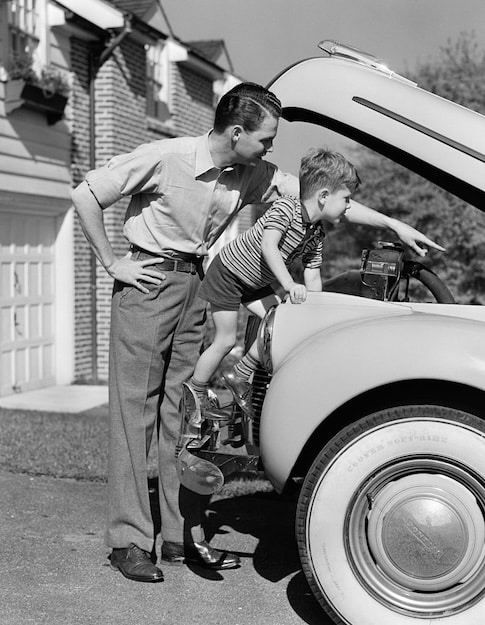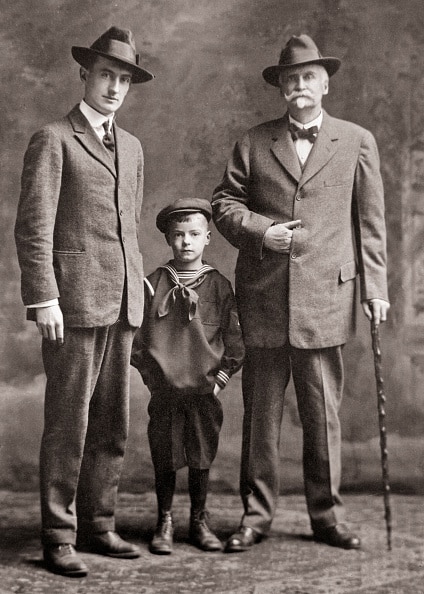
I’ve noticed something you’ve probably noticed too.
Grown men dressing like boys.
In a typical American restaurant, you’ll find 30- and 40-something men dressed like their pre-teen or teenage sons: Air Jordans, a graphic tee, and an oversized flat-brimmed ballcap.
The puerility of men’s clothing is on full display at an American airport. You’ll see men my age shuffle toward TSA in elastic-waist joggers, video game t-shirts, and Crocs. Their kids are wearing nearly identical outfits.
I make the Clint Eastwood Gran Torino grimace at the sight.
Before you peg me as a middle-aged curmudgeon, my 14-year-old son notices the sad state of American grown-man style too: “Hey, Dad,” he’ll say, “that guy over there dresses like I did in 6th grade. He does not mean business.”
Are we just uptight squares who can’t let people enjoy themselves?
Maybe.
But I also think there’s a visceral recognition in both of us that your exterior appearance often reflects the state of your interior character. When a man dresses like a boy on the outside, there’s a chance there’s some stunted development on the inside.
Until very recently, cultures across the world — from sophisticated civilizations to remote tribes — connected a man’s dress to his development into maturity, sometimes even making a wardrobe change a rite of passage into manhood.
In ancient Rome, for example, where the toga was the common form of dress, there was a difference between a boy’s toga and a man’s toga.
At around 16, Roman boys swapped their purple-trimmed toga praetexta for the plain white toga virilis in a public rite of passage that marked their entry into manhood. The father led the boy to the Forum to register as a citizen and make sacrifices. Back at home, the boy dedicated his toys and protective amulet to the household gods. He was now a man.
Past cultures understood something we’ve forgotten: that how a man dresses shapes how he sees himself, how he acts, and how others treat him, and these dynamics in turn influence the culture at large.
So let’s take a look at the history of the distinction between boyswear and menswear, why it vanished, and why it’s worth reviving.
What Happened to the Tradition of Men Dressing Differently From Boys?

Across the last two centuries of Western male dress, boys’ clothing tended to be looser, brighter, and more utilitarian — made for getting dirty and handling rough-and-tumble play. Men’s attire, by contrast, was more tailored, sober, and symbolic of dignity and responsibility.
From the 1800s through the 1940s in the West, boys typically wore short pants with knee socks, paired with buttoned jackets or tunics in the late 19th century, and with blazers or pullover sweaters in the early 20th. White-collar men, on the other hand, wore full, formal suits. Short pants signaled boyhood; full-length trousers signaled manhood. When boys got their first long trousers — or received a watch or tie as a gift — these were signals that the young lad was joining the ranks of the men.
Headwear also marked the age divide during these eras: in the 19th century, boys wore flat caps, while adult men wore top hats or bowlers; by the early 20th century, men had shifted to fedoras, trilbies, or homburgs.
By the 1950s, boys began wearing jeans, t-shirts, baseball jackets, and Chuck Taylors for play, while still dressing in nicer trousers and button-down shirts for school. Adult men might throw on a GI-issue undershirt for chores around the house, but they didn’t wear t-shirts in public. During their leisure time, they opted for sport shirts, chinos, and cardigans,
No comments:
Post a Comment